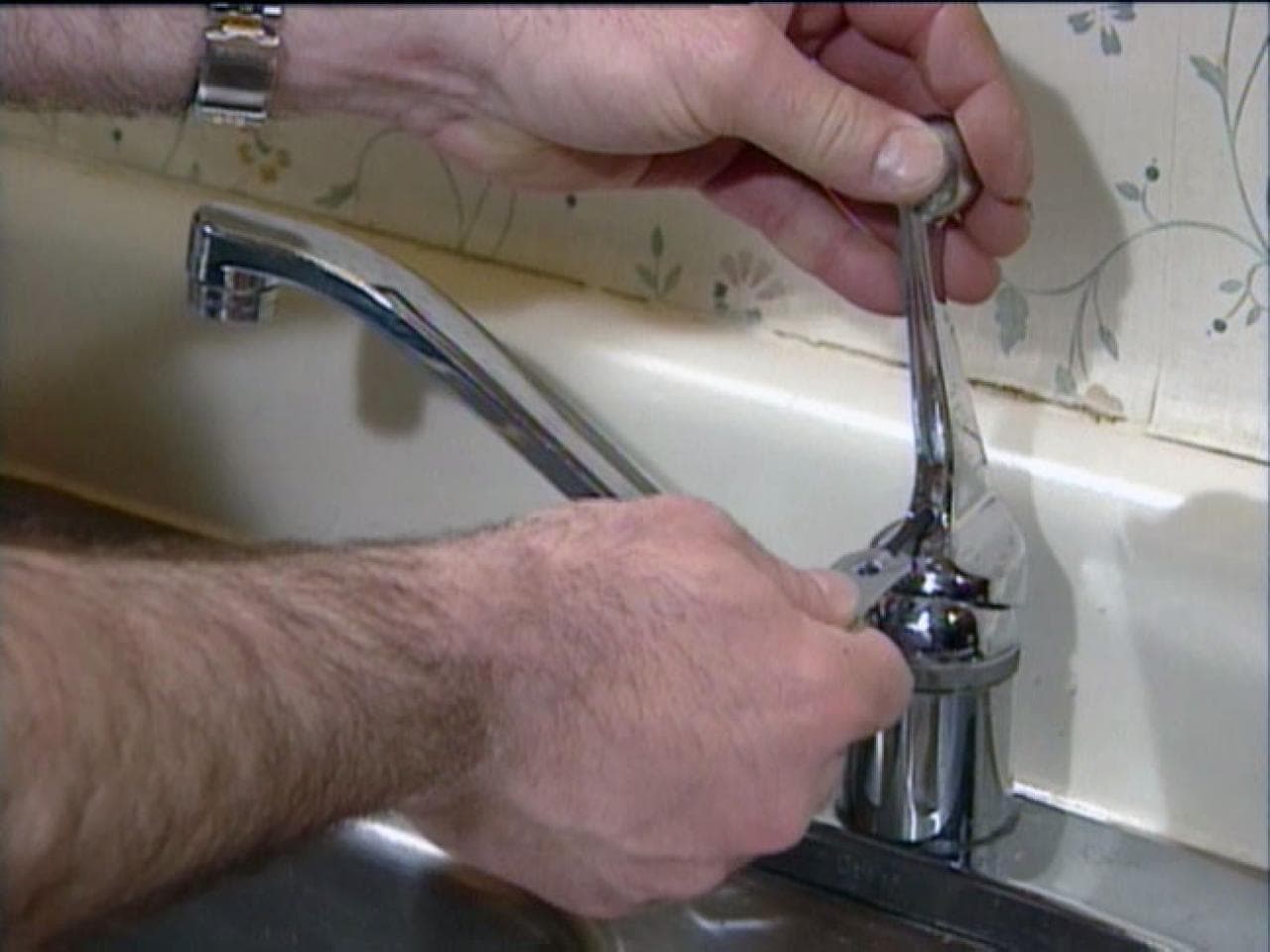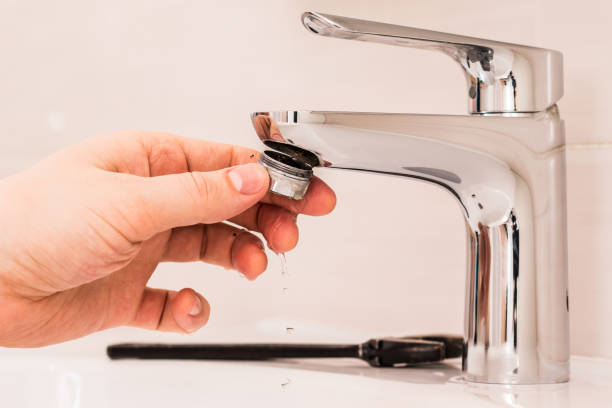Why It's Necessary to Repair a Dripping Faucet
Why It's Necessary to Repair a Dripping Faucet
Blog Article
We've noticed the article relating to Why Are My Faucets Dripping (And Can I Fix It Myself)? listed below on the net and thought it made perfect sense to quickly share it with you on this site.

Leaking taps might appear like a small hassle, yet their impact surpasses just the inconvenience of the noise. From drainage to sustaining unnecessary financial costs and wellness dangers, ignoring a trickling faucet can cause numerous repercussions. In this write-up, we'll look into why it's vital to address this common household concern immediately and successfully.
Wastage of Water
Ecological Impact
Leaking taps contribute dramatically to water waste. According to the Epa (EPA), a single tap dripping at one drip per second can lose greater than 3,000 gallons of water per year. This not only stress water sources yet also impacts communities and wild animals depending on them.
Financial Prices
Increased Water Bills
Beyond the environmental impact, dripping faucets can inflate water bills substantially. The built up waste in time translates into greater energy costs, which might have been avoided with timely repairs.
Potential Residential Property Damages
Moreover, long term leaking can cause damage to fixtures and surface areas bordering the tap. Water buildup can cause staining, corrosion, and even structural problems if left unattended, leading to extra repair service expenses.
Wellness Problems
Mold And Mildew and Mold Development
The continuous existence of wetness from a leaking faucet develops an ideal environment for mold and mildew and mold growth. These fungi not only endanger interior air high quality but also posture wellness dangers, particularly for people with respiratory conditions or allergies.
Waterborne Diseases
Stationary water in dripping faucets can come to be a breeding ground for bacteria and other microorganisms, increasing the risk of waterborne conditions. Pollutants such as Legionella bacteria prosper in stationary water, possibly bring about significant health problems when consumed or inhaled.
Do it yourself vs. Specialist Repair work
Benefits and drawbacks of Do It Yourself Repair
While some may attempt to fix a dripping faucet themselves, do it yourself repairs include their very own set of difficulties. Without appropriate understanding and devices, DIY attempts can intensify the issue or result in incomplete repairs, lengthening the trouble.
Advantages of Employing a Professional Plumber
Hiring a professional plumber guarantees that the underlying root cause of the leaking tap is addressed successfully. Plumbing technicians have the expertise and devices to identify and repair tap concerns effectively, saving time and decreasing the threat of additional damage.
Step-by-Step Guide to Dealing With a Dripping Tap
Tools Required
Prior to attempting to deal with a leaking faucet, collect the necessary devices, including a flexible wrench, screwdrivers, replacement components (such as washers or cartridges), and plumber's tape.
Usual Faucet Issues and Their Solutions
Recognize the type of tap and the specific problem creating the drip. Common issues consist of worn-out washing machines, rusty valve seats, or damaged O-rings. Refer to maker guidelines or online tutorials for step-by-step support on fixings.
Preventive Measures
Normal Maintenance Tips
To prevent leaking taps, perform regular upkeep such as cleaning up aerators, checking for leaks, and changing damaged components promptly. Additionally, consider installing water-saving gadgets or upgrading to much more efficient fixtures.
Significance of Prompt Repair Works
Dealing with dripping faucets as soon as they're noticed prevents more water waste and prospective damage, inevitably saving both water and money in the future.
Effect On Building Worth
Perception of Well-Maintained Property
Preserving a residential property in good condition, including addressing upkeep issues like leaking taps, enhances its regarded value and charm amongst potential purchasers or tenants.
Influence on Resale Worth
Residences with properly maintained plumbing fixtures, including faucets, command greater resale worths in the real estate market. Dealing with leaking taps can add to a favorable impression during home assessments and arrangements.
Ecological Duty
Specific Payment to Preservation
Taking duty for taking care of trickling taps lines up with wider efforts toward water preservation and environmental sustainability. Every individual's activities jointly make a substantial effect on protecting precious sources.
Lasting Living Practices
By prioritizing prompt repair work and adopting water-saving habits, people contribute to lasting living methods that profit both present and future generations.
Verdict
Attending to a dripping tap exceeds plain comfort; it's an important action toward saving water, reducing monetary costs, and securing health and residential property. Whether via DIY repair work or professional aid, acting to deal with trickling taps is a tiny yet impactful means to advertise liable stewardship of resources and add to a healthier, extra sustainable future.
How to Fix a Leaky Faucet: Step-by-Step Repair Guide
A leaky faucet may seem like a simple annoyance, but if it's not fixed promptly, that leak could cost hundreds to potentially thousands. From water damage to mold, mildew, and high water bills, even a tiny leak can be catastrophic if left unattended. Damage like this can even affect the overall value of your home, so it's important to take the right approach for leaky faucet repair. You may need the help of a plumber in some cases, but we've got a few tips you can try on how to fix a leaky faucet before calling the pros.
Four Faucet Types
When you're learning how to fix a leaky faucet, the first step is knowing what kind of faucet you're working with! There are four common types.
Cartridge Faucets
Cartridge faucets come in one- or two-handled varieties. In one-handled cartridge faucets, hot and cold water combines in a single cartridge. In the two-handled versions, hot and cold water are controlled separately and mixed in the faucet.
Ball Faucets
Ball faucets have a single lever you push up and down to adjust the pressure and rotate to change the temperature. A slotted metal ball controls the amount of water allowed into the spout.
Compression Washer Faucets
They're the oldest type of faucet, but they're still used in many homes — especially older ones. Compression faucets have two separate handles that, when turned, raise or lower the washer that seals a water valve. This valve stops water from flowing through the faucet when it is turned off.
Disc Faucets
Disc faucets rarely need to be repaired due to their maintenance-free design. The water flow is controlled by two discs — the upper one raises and lowers against a fixed lower disc, creating a watertight seal. If your disc faucet starts leaking, you may need to replace the seals or clean residue buildup from the inlets.
Fixing a Leaky Faucet
Step 1: Turn Off the Water
Whether you're learning how to fix a leaky bathtub faucet or how to fix a leaky kitchen faucet, always turn off the water supply to your working area when you're fixing a leak. The last thing you want is a flood added to your list of things to fix.
Look for the shutoff valves below your sink or around the tub and turn them clockwise to stop the water flow. If your faucet doesn't have shutoff valves, you may need to turn off the water for the whole house. Check to make sure it's off by turning the faucet on. If nothing comes out, you're ready to start the repair.
Step 2: Take Apart the Faucet
How you disassemble your faucet depends on the type of fixture you have. You can use a flathead screwdriver to remove the caps on top of the handle or handles for cartridge and compression faucets. Inside, you should see handle screws. Unscrew these with a screwdriver to remove the handle.
Disc- and ball-style faucets will typically have an inlet screw near the handle, and removing that will reveal the interior of the faucet.
Detach the Valve Stem
For cartridge- and compression-style faucets, you'll see the inner valve stem or cartridge once you remove the faucet handles. If you have a compression faucet, unscrew the brass valve stem. If you have a cartridge faucet, pull out the cartridge. If your cartridge has been in place for a while, it may require some tools or extra force to remove it due to mineral deposits.
Examine and Replace Parts
Once you've removed the parts, check them out to confirm what needs to be replaced. You may see corroded rubber washers, O-rings, stems, or cartridges. On a ball-style faucet, check the seats and springs for damage.
If you need to repair a leaky disc faucet, check the inlet and seals on the lower disc.
Once you determine what parts must be replaced, visit your local hardware store. Bring the damaged parts with you to ensure you can purchase the correct components to replace them.
Clean Valves and Faucet Cavity
If you've removed a stem or cartridge, you may notice mineral buildup in the faucet's threads. Use white vinegar to clean the valve seat by soaking it for a few minutes, then scrub it away with a soft toothbrush and rinse with warm water. You can also clean the interior of the faucet in the same way.
Reassemble the Faucet
Once your faucet is cleaned and the required parts have been replaced, it's time to reassemble it. Put the pieces back together and slowly turn the water supply back on. Doing this slowly is crucial because too much initial water pressure can damage the new hardware you've just installed.
https://homewarranty.firstam.com/blog/how-to-fix-leaky-faucet

Hopefully you enjoyed our piece about Should I Repair or Replace a Leaky Faucet?. Thanks for taking a few minutes to read through our post. Sharing is caring. Helping people is fun. We treasure your readership.
Report this page